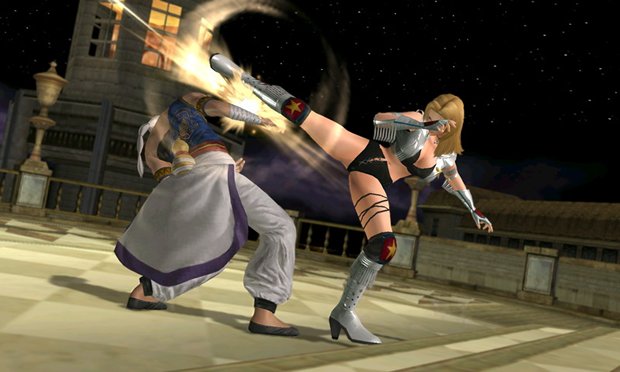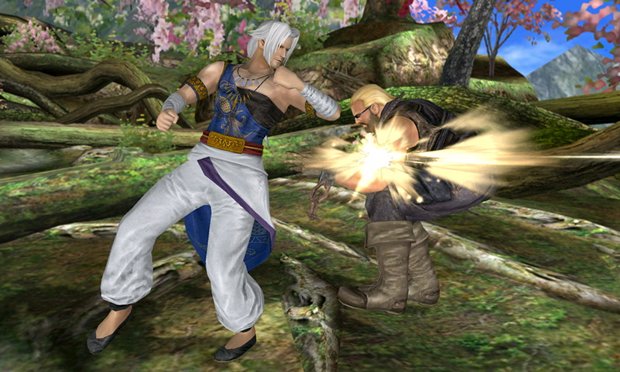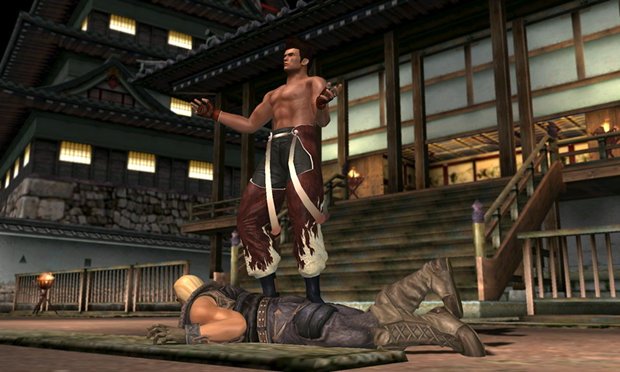Dead or Alive Dimensions: An interview with Team Ninja's Yosuke Hayashi
Straight talk with the Ninja master himself
GR: DoA set a bit of a precedent by being one of the first big fighting game franchises to eschew the “arcade-first, console port later” format. Nowadays this seems to be the norm – or you’re even seeing the reverse happening, like with Super Street Fighter IV. Why do you see this trend happening, and do you think fighting games in arcades are dead at this point?

YH: Speaking in terms of the Japanese arcade scene, it’s pretty bad at the moment. I think what SF did was… well, they did what they could do, put it out on the console first. The market wouldn’t really allow the reverse of that. The arcade version exists for the SF champs to show off, basically.
GR: It’s Daigo’s personal theatre.
YH: *laughs* Yeah! But for us, we took a different perspective. With this game, we wanted to bring the series back to life. We haven’t had anything for five years, after all. To bring this back meant to get back our DoA player base, and to expand on the current fighting game community as well. This game is like a “reboot” of sorts – you’ll definitely be seeing more DoA in the future.

GR: Something longtime DoA fans may have noticed is that this is the first “T” rated game in the series in a while – most of the previous games garnered an “M.” DoA has a bit of a reputation for edgy content – does this mean you’ve “toned it down” in any way for a broader (and presumably younger) 3DS market?
YH: Our core fighting action has always been more in line with the “T” rating, really. The main difference is that, in the previous games, some of the movies and sequences could get a bit racy. That’s more or less why the ESRB gave us an “M.” As a result, the whole game needed to be M-rated. But we want fans to know that we haven’t changed or toned down anything here. The fighting’s still as intense as ever, and you’ll still get plenty of fanservice. I guess the ESRB decided this time that our cinematics were on the “T” level, so that’s why we’ve got the rating.
GR: With exceptionally violent fighting games like MK on the market now, consumers might have a different expectation of “M” rated fighting games, as well.
Weekly digests, tales from the communities you love, and more
YH: It is. We definitely don’t want to go down the same path as MK. Wouldn’t it just be disturbing if you could pop Kasumi’s head off? *laughs* We’re not really concerned so much about ratings when we make our games. We just want to make what fits us – and the game – best. What it winds up being rated is strictly up to the ESRB to decide.

GR: If we are to see more DoA games in the future, will the series go in a more portable direction, or will we see it on the home consoles as well?
YH: For this particular game, we felt that brining the series back into the limelight in a portable fashion was the right step. Our team isn’t so much influenced by the way the market flows – for example, the portable market in Japan is much stronger, so let’s make games for that. No, it’s got nothing to do with that. Rest assured, you’ll be seeing DoA on bigger things in the future.
GR: Let’s wrap this up with a corporate question: How has the whole merger with Koei been going? Also, when can we expect the game where we fight a horde of a million Kasumi clones coming at us at once?
YH: *laughs* It’s really unusual for Tecmo and Koei to have come together – rarely in the Japanese games business do two development companies merge. Yes, there was Square-Enix, but you need to remember that the Enix portion was strictly a content publisher and not a developer. We and Koei had a completely different philosophy of doing things, but rather than forcing those philosophies on each other and making stuff like Ninja Gaiden Warriors – we don’t want to do that sort of thing just for the sake of doing it, because nobody wants that. If our philosophies overlap and we can do something together that’s meaningful and makes sense, but we won’t do anything stupid.
Apr 27, 2011
YH: *laughs* It’s really unusual for Tecmo and Koei to have come together – rarely in the Japanese games business do two development companies merge. Yes, there was Square-Enix, but you need to remember that the Enix portion was strictly a content publisher and not a developer. We and Koei had a completely different philosophy of doing things, but rather than forcing those philosophies on each other and making stuff like Ninja Gaiden Warriors – we don’t want to do that sort of thing just for the sake of doing it, because nobody wants that. If our philosophies overlap and we can do something together that’s meaningful and makes sense, but we won’t do anything stupid.
Apr 27, 2011


